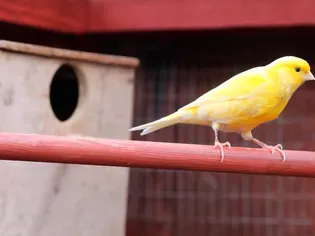Black Palm Cockatoo (Goliath Cockatoo): Bird Species Profile
Updated on 05/26/24

Discover the Majestic Black Palm Cockatoo: A Comprehensive Bird Species Profile
Prepare to be captivated by one of the most extraordinary creatures in the avian world: the enigmatic Black Palm Cockatoo. This iconic Australian parrot, also known as the Goliath Cockatoo, stands out for its unmistakable appearance, distinct behavior, and intriguing biology. With its hauntingly beautiful plumage, impressive size, and fascinating lifestyle, the Black Palm Cockatoo is a species that demands admiration and respect.
Introduction
Belonging to the genus Probosciger, the Black Palm Cockatoo is the largest of all cockatoo species. Native to the tropical rainforests of northern Australia and southern New Guinea, these majestic birds play a crucial role in the ecological balance of their ecosystems. Their distinctive appearance and intriguing behavior have captivated ornithologists and bird enthusiasts alike, making them a highly sought-after species for observation and research.
Physical Characteristics
The Black Palm Cockatoo is truly a sight to behold. Its most striking feature is its enormous, chisel-shaped bill, which is uniquely adapted for extracting seeds from hard-shelled nuts. The bill is so large that it extends beyond the bird's forehead, giving it a distinctive profile. Its towering crest, consisting of elongated feathers, adds to its impressive appearance.
Predominantly black in color, the Black Palm Cockatoo exhibits subtle variations in its plumage. The feathers of its wings and tail have a glossy sheen, while the underparts and crest are tinged with a smoky gray. The bare skin around the eyes and bill is a distinctive shade of dark gray to black.
Size and Weight
As the largest of all cockatoo species, the Black Palm Cockatoo is truly a avian giant. Adults typically measure around 55-60 cm (22-24 inches) in length and weigh between 900-1,200 grams (2-2.6 pounds). The massive bill is particularly impressive, measuring up to 10-15 cm (4-6 inches) in length.
Distribution and Habitat
The Black Palm Cockatoo is native to the tropical rainforests of northern Australia and southern New Guinea. Within Australia, its distribution is restricted to the Cape York Peninsula and the Top End of the Northern Territory. These rainforests provide the birds with an abundance of food resources, including palm nuts, seeds, and fruits.
Diet and Feeding
The Black Palm Cockatoo has a specialized diet that revolves around palm nuts, particularly those of the Livistona palm. Its powerful bill is perfectly adapted for cracking open the hard shells of these nuts to access the nutritious kernels inside. The birds also consume a variety of other seeds, fruits, and insects to supplement their diet.
Breeding
Black Palm Cockatoos form long-term, monogamous pairs that remain together for life. The breeding season typically occurs during the wet season, from November to May. The female lays one to two eggs in a tree hollow, and both parents take turns incubating the eggs for around 30 days.
The chicks fledge from the nest after approximately 12 weeks. They remain dependent on their parents for another several months until they become fully independent.
Conservation Status
The Black Palm Cockatoo is classified as a Vulnerable species by the International Union for Conservation of Nature (IUCN). Its population has declined significantly in recent years due to habitat loss, poaching, and the illegal pet trade. Conservation efforts are underway to protect the remaining populations and ensure the survival of this magnificent bird species.
Conclusion
The Black Palm Cockatoo is a true avian marvel that embodies the beauty, diversity, and ecological significance of the Australian rainforest. With its striking appearance, impressive size, and specialized diet, this majestic bird holds a special place in the hearts of bird enthusiasts and conservationists alike. By raising awareness about this incredible species, we can contribute to its protection and ensure that future generations have the opportunity to witness its unparalleled beauty and grace.
Explore More Pets

Small Bird Breeds
Gloster Canary: Bird Species Profile

Small Bird Breeds
Java Finch: Bird Species Profile

Small Bird Breeds
Zebra Finch (Chestnut-Eared Finch): Bird Species Profile

Small Bird Breeds
Alexandrine Parakeet: Species Characteristics & Care

Small Bird Breeds
Canary: Bird Species Profile

Small Bird Breeds
Lovebird (Pocket Parrot) Species Profile

Small Bird Breeds
A Guide to Pet Budgie Birds

Small Bird Breeds
Types of Small Parrots
